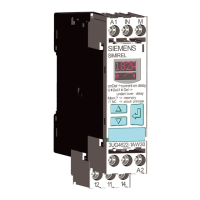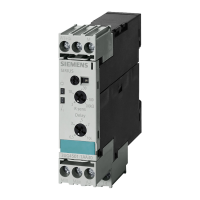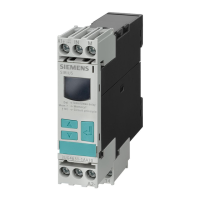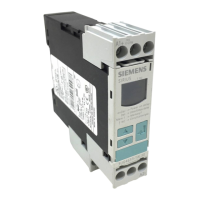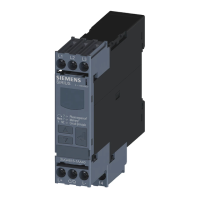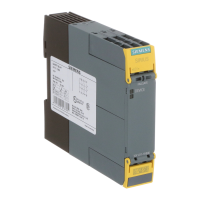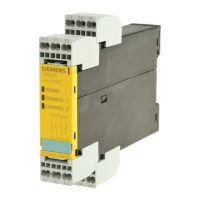• Wide-range supply voltage
3UG4625 residual current monitoring relays can be operated at an input voltage of between
24 and 240 V AC/DC. This not only ensures that devices can be used worldwide, but that
temporary supply voltage dips do not cause a failure of the monitoring function, that is, plant
stoppage.
The switching response of the relay outputs can be set to open-circuit principle (NO) if you
intend to continue plant operation even if the monitoring function fails. This means only
actively determined fault currents are reported via the relay outputs.
• Permanent self-monitoring
The permanent self-monitoring feature of 3UG4625 ensures reliable system monitoring.
The connected 3UL23 residual current transformer is also permanently monitored for open-
circuit or short-circuit. As a result, cyclic manual tests to ensure its function are obsolete.
Regardless of this, it is possible at any time to test the output relays for switching capability.
Pressing the Set button for longer than 2.5 s will call up parameter assignment mode. This
will cause the output relays to switch to the fault state as a safety precaution. Proceed as
described above to quit parameter assignment mode. The output relay will once again switch
back to its normal operating state.
Measuring accuracy
The combination of 3UG4625 residual current monitoring relay and 3UL23 residual current
transformer is designed so that a warning or alarm is triggered at the latest upon exceeding the
set limit values. To safeguard this function, slightly higher fault currents than those actually
measured are displayed and compared with the set limit values.
The measuring accuracy is -7.5 %/+7.5 % of the value displayed. This takes into account the
measuring accuracy of monitoring relay and residual current transformer.
Limits of fault current measurement
In the event of increasing primary currents, transformer production tolerances, imbalances in
the cable routing and current loads in individual cables increasingly cause what appear to be
fault currents that are detected by the evaluation units.
An increased false tripping may occur if excessively low monitoring limit values have been set at
high primary currents. Such tolerances also mean that the measuring accuracy no longer
corresponds to the range of between -7.5 %/+7.5 %.
To avoid these types of measuring errors and false tripping, we recommend to set the limit
values to the minimum values listed in the following graphic, depending on the applicable
primary current.
3UG4625 residual current monitoring relay with 3UL23 transformer
8.3 Functions
SIRIUS 3UG4 / 3RR2 monitoring relay
138 Equipment Manual, 07/2021, NEB927043002000/RS-AD/005
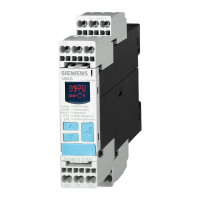
